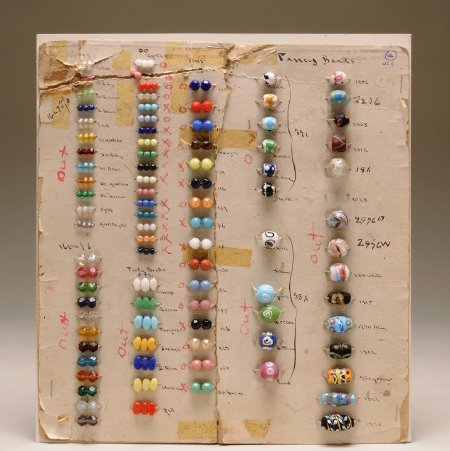Title:
BEAD SAMPLE CARD
Date:
ca. 1910
Source:
Gift of J.L. Sherburne
Object ID:
X1952.06.32
Description:
Since time immemorial, Montana's First Peoples have fashioned natural materials such as bone, porcupine quills, shells, and stone into decorative ornaments to adorn clothing and other possessions. European explorers and fur traders introduced glass beads and beading traditions to North America in the 1600s, often via existing intertribal trade networks. By the 1820s, trading posts throughout the West stocked European-manufactured beads, a prized trade item among the region's indigenous peoples. Glass beads were aesthetically pleasing and easily incorporated into indigenous designs. Unlike quills, beads required no preparation to apply and could be re-used. Sample cards were used to show customers the variety of beads a trader had in stock. This card came from Browning's Sherburne Mercantile, which operated on the Blackfeet Reservation from 1896 to 1942. With limited access to natural materials during the late-1800s and the wide availability of glass beads, Native artists became known for producing the spectacular beadwork still associated with Plains Indians today.
 Virtual Exhibits
Virtual Exhibits


